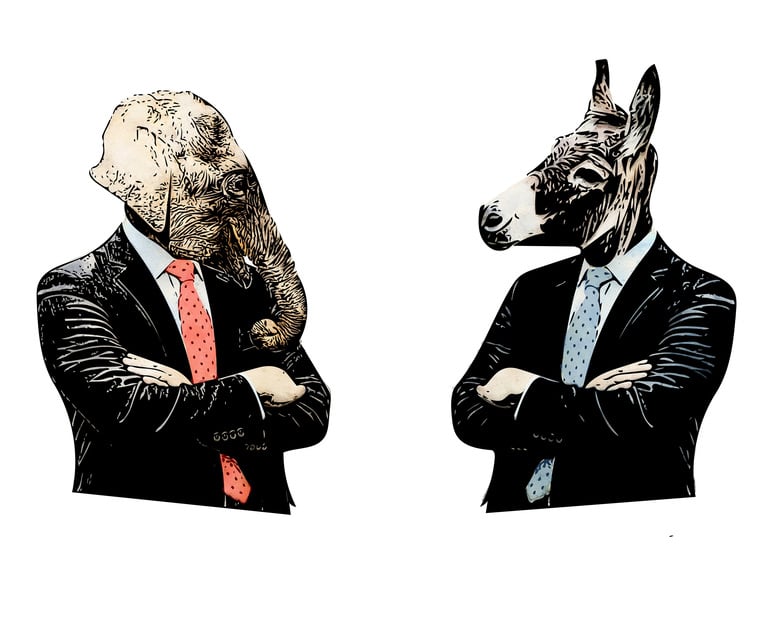Know Your Client
Understanding the GC-management team relationship is critical to an ethical legal department.
December 31, 2008 at 07:00 PM
3 minute read
A few months ago, I wrote an InsidePerspectives column (see “Higher Standards,” November 2008) urging a community-based approach to raising awareness of ethical issues in-house counsel face. My commitment to this idea was tested when InsideCounsel asked me to participate in its new ethics column. I am not an accomplished writer on this topic, but I have a concern that in-house counsel tend to relegate ethics proficiency to remote positions on their “to-do” lists.
For some the content in this column will be familiar, but I urge you to view it as a necessary review. Remember, the in-house counsel who found themselves entangled in high-profile ethical and legal difficulties were seasoned corporate counsel (see “Under Scrutiny,” June 2008). Clearly, this subject matter becomes more critical as we progress in our careers. For those new to the in-house practice, I hope this column will serve as a syllabus for your ethics training.
Let's start with client identity, because the stories of in-house counsel who have found themselves in ethical and legal difficulties share a common theme: The client was overlooked.
In just about every case, the in-house lawyer replaced fidelity to the client with self-interest or loyalty to the management team. Whether those transgressions were intentional or negligent, the proper attorney-client relationship requires attention and recommitment.
The Model Rules of Professional Conduct provide that “[a] lawyer employed or retained by an organization represents the organization acting through its duly authorized constituents.” Organizational constituents remain identified with the client provided they are acting in the interest of the client. To the extent that a constituent's interests are adverse to the client's, the Rule counsels that the lawyer “shall explain the identity of the client.”
Comment 10 to this rule explains: “Care must be taken to assure that the individual understands that, when there is such adversity of interest, the lawyer for the organization cannot provide legal representation for that constituent individual, and that discussions between the lawyer for the organization and the individual may not be privileged.”
The importance of clarifying the attorney-client relationship when a constituent's adverse interest is apparent has given rise to the use of “corporate Miranda warnings.” These are designed to set organizational constituents' expectations by clarifying your role to represent the corporation.
While the concept of the organizational client is complicated for in-house counsel, this notion is absolutely foreign to our corporate constituents. This nuanced conception of the client stands in stark contrast to the common portrayal and understanding of the attorney-client relationship, replete with expectations of an absolute duty of confidentiality.
The manner in which our constituents often perceive legal departments reinforces this misperception. Too often we are cast or cast ourselves as the corporate team's attorneys. Often, our business partner communications suggests that we owe direct duties to the constituents. We must accept that for corporate personnel, the term “client” evokes a vision of the attorney-client relationship that is inapposite in the corporate setting.
Managing this complex aspect of in-house practice requires setting expectations across the organization. Introducing the concept of the client in regular training, staff meetings and one-on-one meetings will minimize misunderstandings as to the nature of our duties.
This column will strive to be focused on reader-identified issues and concerns. Please send me your suggestions for the content of this community dialog on in-house ethics at [email protected].
This content has been archived. It is available through our partners, LexisNexis® and Bloomberg Law.
To view this content, please continue to their sites.
Not a Lexis Subscriber?
Subscribe Now
Not a Bloomberg Law Subscriber?
Subscribe Now
NOT FOR REPRINT
© 2025 ALM Global, LLC, All Rights Reserved. Request academic re-use from www.copyright.com. All other uses, submit a request to [email protected]. For more information visit Asset & Logo Licensing.
You Might Like
View All
Beyond the Title: Developing a Personal Brand as General Counsel

Step 1 for Successful Negotiators: Believe in Yourself
Trending Stories
- 1Restoring Trust in the Courts Starts in New York
- 2'Pull Back the Curtain': Ex-NFL Players Seek Discovery in Lawsuit Over League's Disability Plan
- 3Tensions Run High at Final Hearing Before Manhattan Congestion Pricing Takes Effect
- 4Improper Removal to Fed. Court Leads to $100K Bill for Blue Cross Blue Shield
- 5Michael Halpern, Beloved Key West Attorney, Dies at 72
Who Got The Work
Michael G. Bongiorno, Andrew Scott Dulberg and Elizabeth E. Driscoll from Wilmer Cutler Pickering Hale and Dorr have stepped in to represent Symbotic Inc., an A.I.-enabled technology platform that focuses on increasing supply chain efficiency, and other defendants in a pending shareholder derivative lawsuit. The case, filed Oct. 2 in Massachusetts District Court by the Brown Law Firm on behalf of Stephen Austen, accuses certain officers and directors of misleading investors in regard to Symbotic's potential for margin growth by failing to disclose that the company was not equipped to timely deploy its systems or manage expenses through project delays. The case, assigned to U.S. District Judge Nathaniel M. Gorton, is 1:24-cv-12522, Austen v. Cohen et al.
Who Got The Work
Edmund Polubinski and Marie Killmond of Davis Polk & Wardwell have entered appearances for data platform software development company MongoDB and other defendants in a pending shareholder derivative lawsuit. The action, filed Oct. 7 in New York Southern District Court by the Brown Law Firm, accuses the company's directors and/or officers of falsely expressing confidence in the company’s restructuring of its sales incentive plan and downplaying the severity of decreases in its upfront commitments. The case is 1:24-cv-07594, Roy v. Ittycheria et al.
Who Got The Work
Amy O. Bruchs and Kurt F. Ellison of Michael Best & Friedrich have entered appearances for Epic Systems Corp. in a pending employment discrimination lawsuit. The suit was filed Sept. 7 in Wisconsin Western District Court by Levine Eisberner LLC and Siri & Glimstad on behalf of a project manager who claims that he was wrongfully terminated after applying for a religious exemption to the defendant's COVID-19 vaccine mandate. The case, assigned to U.S. Magistrate Judge Anita Marie Boor, is 3:24-cv-00630, Secker, Nathan v. Epic Systems Corporation.
Who Got The Work
David X. Sullivan, Thomas J. Finn and Gregory A. Hall from McCarter & English have entered appearances for Sunrun Installation Services in a pending civil rights lawsuit. The complaint was filed Sept. 4 in Connecticut District Court by attorney Robert M. Berke on behalf of former employee George Edward Steins, who was arrested and charged with employing an unregistered home improvement salesperson. The complaint alleges that had Sunrun informed the Connecticut Department of Consumer Protection that the plaintiff's employment had ended in 2017 and that he no longer held Sunrun's home improvement contractor license, he would not have been hit with charges, which were dismissed in May 2024. The case, assigned to U.S. District Judge Jeffrey A. Meyer, is 3:24-cv-01423, Steins v. Sunrun, Inc. et al.
Who Got The Work
Greenberg Traurig shareholder Joshua L. Raskin has entered an appearance for boohoo.com UK Ltd. in a pending patent infringement lawsuit. The suit, filed Sept. 3 in Texas Eastern District Court by Rozier Hardt McDonough on behalf of Alto Dynamics, asserts five patents related to an online shopping platform. The case, assigned to U.S. District Judge Rodney Gilstrap, is 2:24-cv-00719, Alto Dynamics, LLC v. boohoo.com UK Limited.
Featured Firms
Law Offices of Gary Martin Hays & Associates, P.C.
(470) 294-1674
Law Offices of Mark E. Salomone
(857) 444-6468
Smith & Hassler
(713) 739-1250








